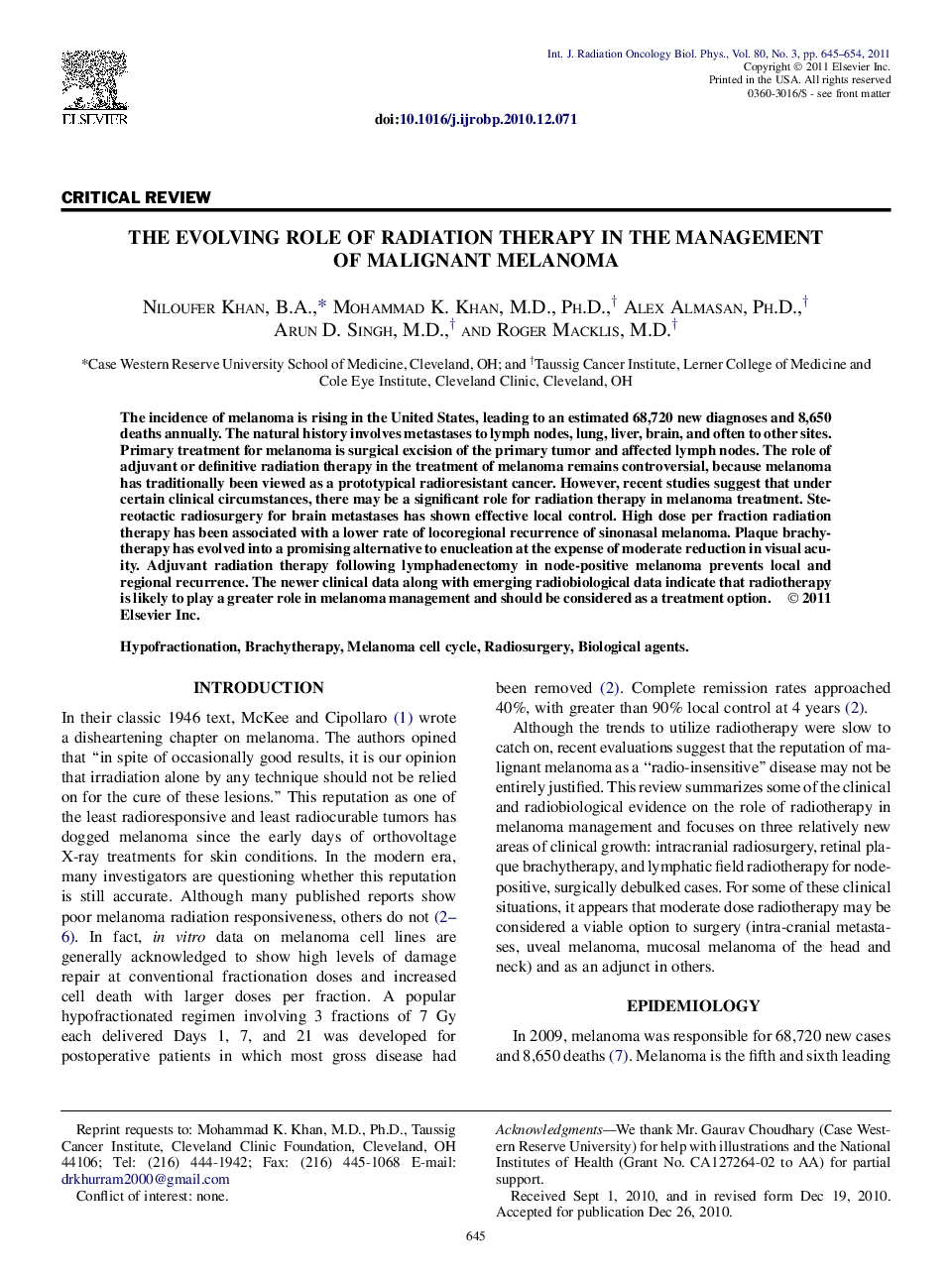| Article ID | Journal | Published Year | Pages | File Type |
|---|---|---|---|---|
| 8229775 | International Journal of Radiation Oncology*Biology*Physics | 2011 | 10 Pages |
Abstract
The incidence of melanoma is rising in the United States, leading to an estimated 68,720 new diagnoses and 8,650 deaths annually. The natural history involves metastases to lymph nodes, lung, liver, brain, and often to other sites. Primary treatment for melanoma is surgical excision of the primary tumor and affected lymph nodes. The role of adjuvant or definitive radiation therapy in the treatment of melanoma remains controversial, because melanoma has traditionally been viewed as a prototypical radioresistant cancer. However, recent studies suggest that under certain clinical circumstances, there may be a significant role for radiation therapy in melanoma treatment. Stereotactic radiosurgery for brain metastases has shown effective local control. High dose per fraction radiation therapy has been associated with a lower rate of locoregional recurrence of sinonasal melanoma. Plaque brachytherapy has evolved into a promising alternative to enucleation at the expense of moderate reduction in visual acuity. Adjuvant radiation therapy following lymphadenectomy in node-positive melanoma prevents local and regional recurrence. The newer clinical data along with emerging radiobiological data indicate that radiotherapy is likely to play a greater role in melanoma management and should be considered as a treatment option.
Related Topics
Physical Sciences and Engineering
Physics and Astronomy
Radiation
Authors
Niloufer B.A., Mohammad K. M.D., Ph.D., Alex Ph.D., Arun D. M.D., Roger M.D.,
